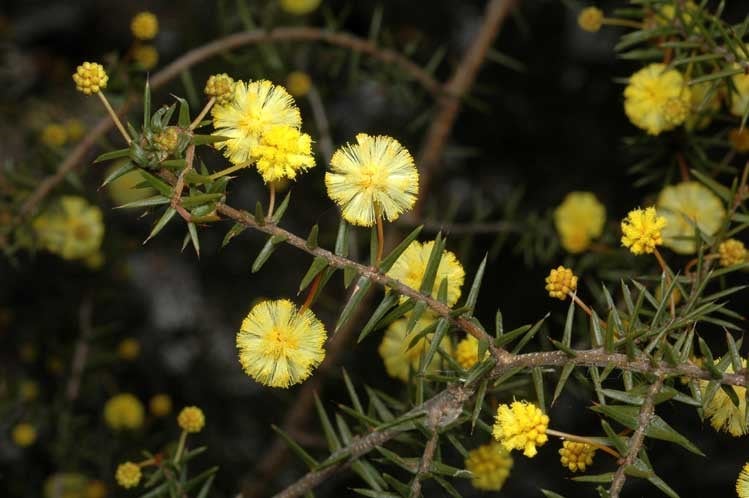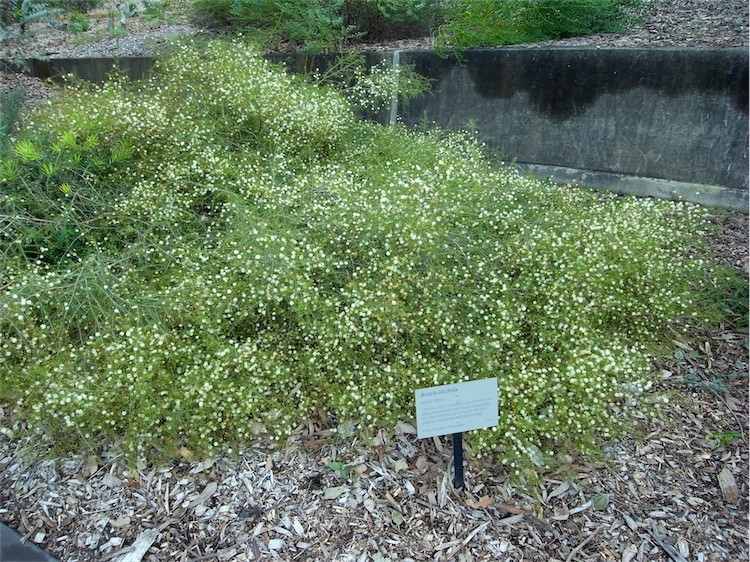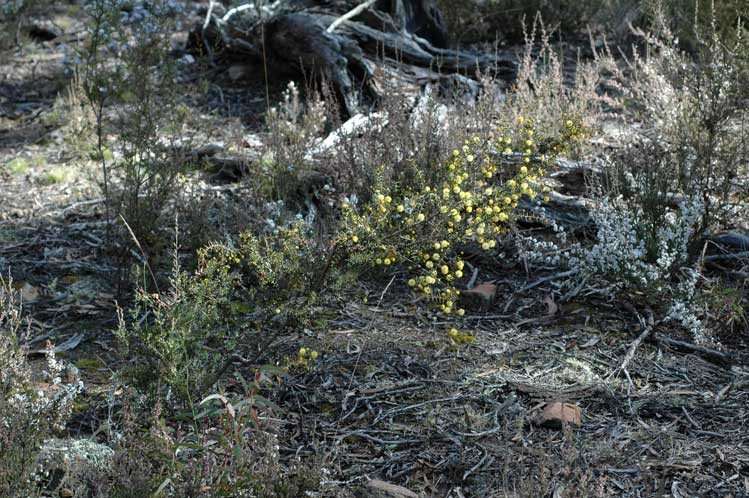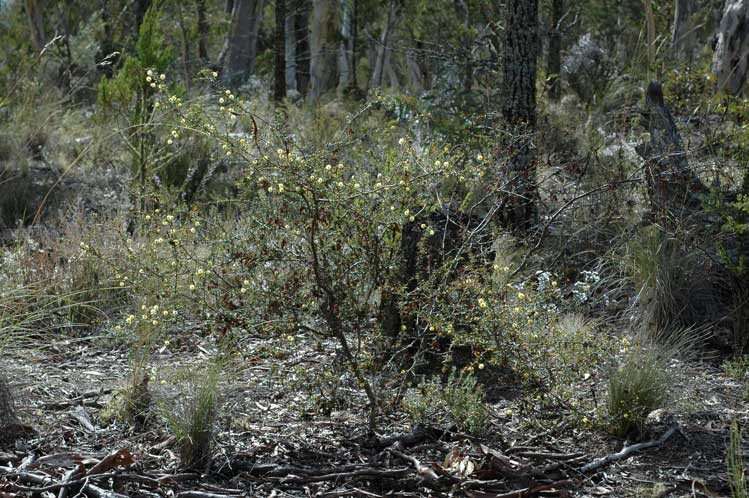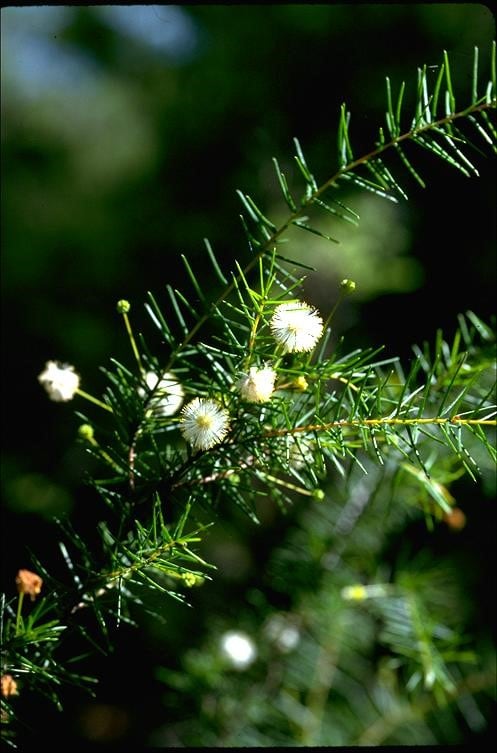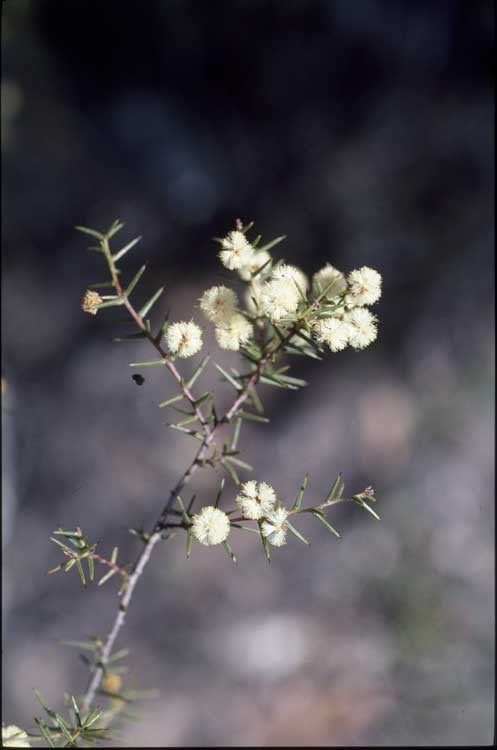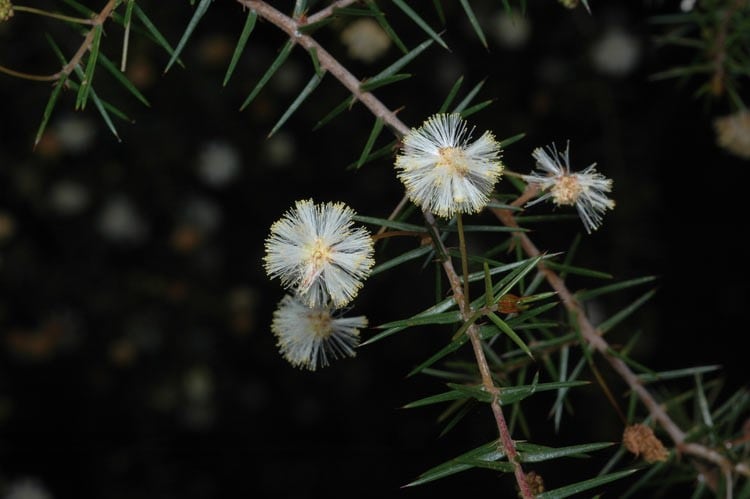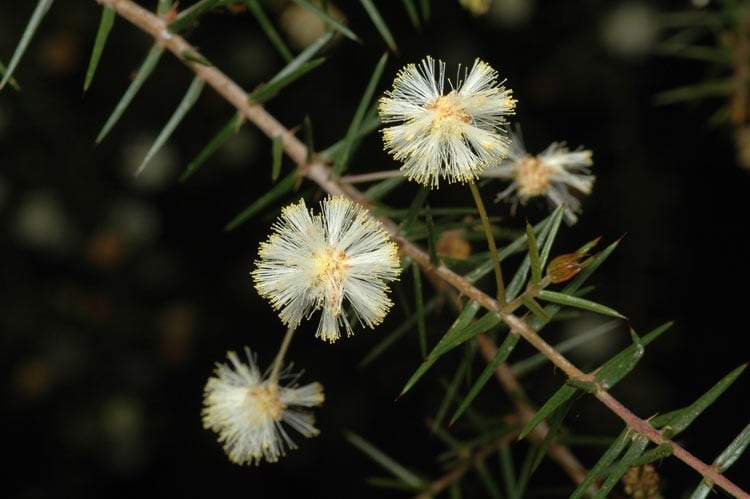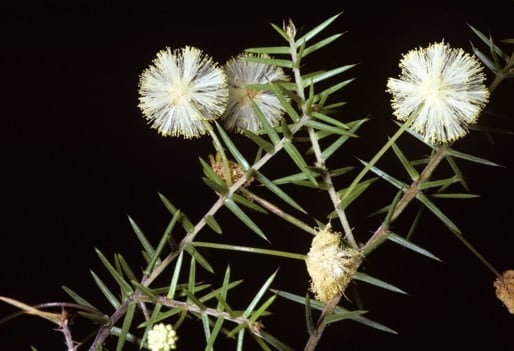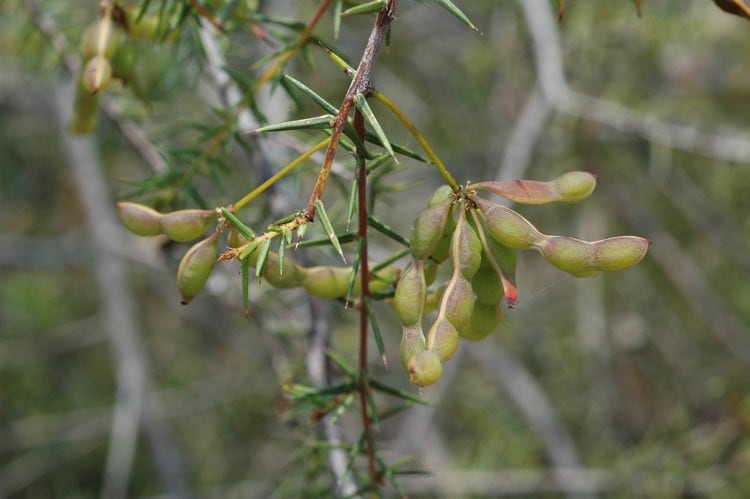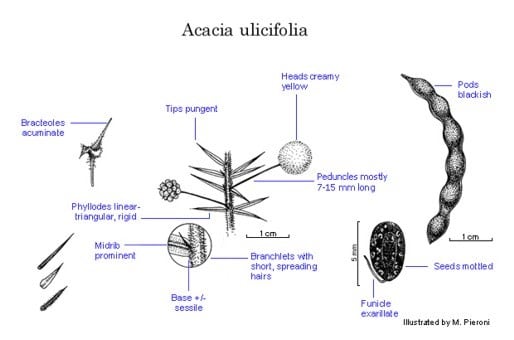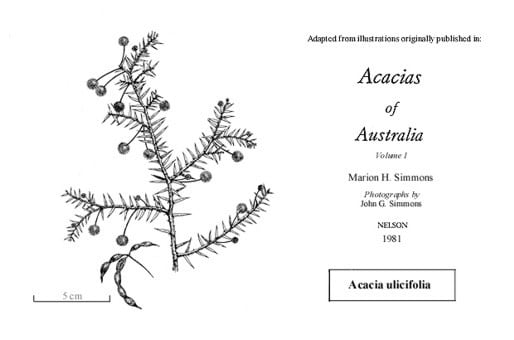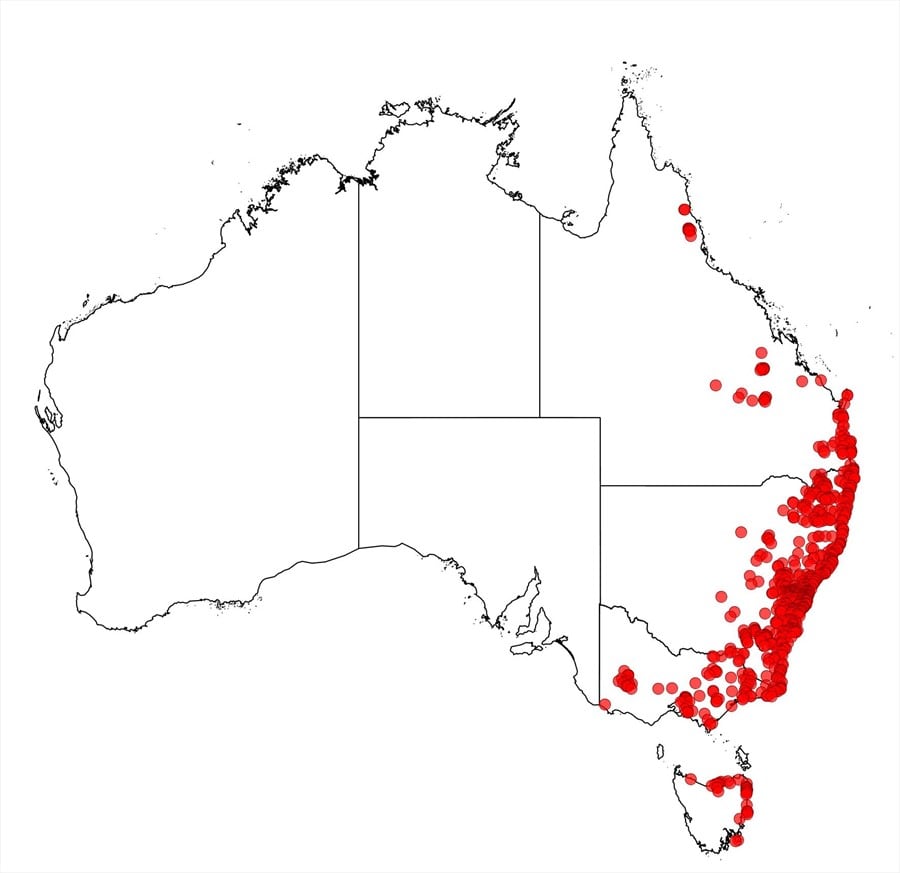Acacia ulicifolia (Salisb.) Court
WATTLE
Acacias of Australia
Common Name
Juniper Wattle, Prickly Moses
Family
Fabaceae
Distribution
Occurs in the Great Divide of eastern Australia from the Grampians, Vic., through N.S.W. and A.C.T. to the Blackdown Tablelands and Ravenshoe in Qld; also found in NE Tas.
Description
Erect often straggly shrub mostly 1–2 m high. Branchlets sparsely to moderately hirsutellous to puberulous, at least at extremities. Stipules persistent, frequently > 1 mm long. Phyllodes often crowded, subsessile, scattered, sometimes some subverticillate, patent, linear-triangular, flat except ±quadrangular when very narrow, 5–15 (–18) mm long but often < 10 mm, 0.5–1.5 mm wide, pungent, rigid, green, usually glabrous; midrib prominent on each face; gland obscure, 0.5–3 mm above base. Inflorescences simple, 1 per axil; peduncles 7–15 (–20) mm long, slender, 0.3–0.5 mm diam. when dry, mostly glabrous; basal bracts 3 and fused; heads globular, 20–35-flowered, creamy yellow; bracteoles acuminate, not or scarcely exserted beyond flowers in buds. Flowers 5-merous; sepals free to 1/2-united; petals 1-nerved. Pods normally slightly constricted between seeds, 2–6 cm long, 4–6 mm wide, thinly coriaceous, dark brown to black, glabrous or subglabrous. Seeds longitudinal, oblong to elliptic, 3.5–5 mm long, normally mottled, exarillate; funicle filiform.
Phenology
Flowers Apr.–Oct.
Habitat
Usually grows in sand (often over sandstone), in heath or dry sclerophyll woodland or open forest.
Specimens
Qld: near Ravenshoe, S.J.Dansie 203a (BRI n.v.). N.S.W.: c. 1.6 km NE of Kariong, R.Coveny 4876 (AD, B, BRI, CANB, G, K, L, LE, NSW, PERTH, U, US). A.C.T.: Kowen, H.S.McKee 9570 (CANB). Vic.: c. 11 km due SSW of Mallacoota P.O., A.C.Beauglehole 31167 (MEL, PERTH). Tas.: Freycinet Peninsula, 19 Sept. 1962, D.W.Shoobridge (CANB).
Notes
Acacia ulicifolia together with A. asparagoides, A. neobrachycarpa, A. brownii, A. echinula, A. gunnii and A. saxicola comprise the ‘A. ulicifolia group’. Acacia quadrilateralis and A. siculiformis are not far removed from this group. The important characters of the ‘A. ulicifolia group’ include the following: phyllodes small, pungent, 4-nerved (1-nerved per face when flat) with the adaxial nerve bifurcating at the gland; basal peduncular bracts 3, commonly fused; flowers 5-merous; funicle filiform, non-arillate. Acacia brownii is sometimes treated as a variety of A. ulicifolia, e.g. L.Pedley, Austrobaileya 1: 239 (1980). However, adoption of this approach would necessitate a similar reduction in rank for A. asparagoides, A. echinula, A. saxicola and perhaps also A. neobrachycarpa. Such changes warrant more study than has been possible to date.
Three variants, sometimes sympatric with the typical variant, occur on the north and central coast of N.S.W.: (1) a maritime variant characterised by its compact growth habit, sometimes reaching only 0.5 m in height (e.g. Tiona Beach, 8 km S of Forster, E.F.Constable 1288, NSW), (2) a slender phyllode variant (e.g. c. 4.8 km W of Wingham, 1.6 km SW of Koolee Flat, H.Salasoo 2783, NSW) and (3) a hairy phyllode variant (e.g. 10 km N of Dural, on the main road to Wiseman’s Ferry, M.D.Tindale s.n., NSW167328, PERTH).
Phyllodes and flower-heads resemble A. rupicola.
In central eastern N.S.W. there is intergradation of A. asparagoides, A. brownii, A. echinula and A. ulicifolia, particularly A. ulicifolia –A. brownii and A. ulicifolia –A. echinula and they may form hybrids, fide T.Tame, Acacias SE Australia 96 (1992). Acacia ulicifolia may be confused with narrow phyllode forms of A. gunnii; these two species are sometimes sympatric and possible hybrids between them are reported by T.J.Entwistle et al., in N.G.Walsh & T.J.Entwisle (eds), Fl. Victoria 3: 630 (1996).
FOA Reference
Data derived from Flora of Australia Volumes 11A (2001), 11B (2001) and 12 (1998), products of ABRS, ©Commonwealth of Australia
Author
B.R.Maslin
This identification key and fact sheets are available as a mobile application:
URL: https://apps.lucidcentral.org/wattle/
© Copyright 2018. All rights reserved.
